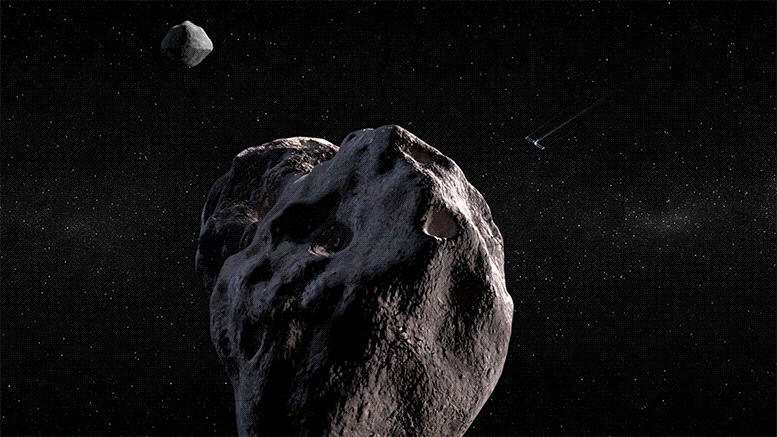
Teams review options for the next Artemis I launch attempt …
The National Space Council meets in Houston …
And Webb captures a new image of a cosmic tarantula …
A few of the stories to tell you about – This Week at NASA!
Teams Review Options for Next Artemis I Launch Attempt
After standing down on the Artemis I launch attempt on September 3 due to a hydrogen leak, teams have decided to make the necessary repairs while the Space Launch System rocket, or SLS, remains at Launch Pad 39B.
The mission will be the first integrated test of NASA’s Orion spacecraft, the SLS rocket, and the ground systems at Kennedy Space Center in Florida and will pave the way for human exploration of the Moon, Mars, and beyond.
Follow along as Artemis I mission managers evaluate options for the next launch attempt by checking out the Artemis blog at blogs.nasa.gov/artemis.
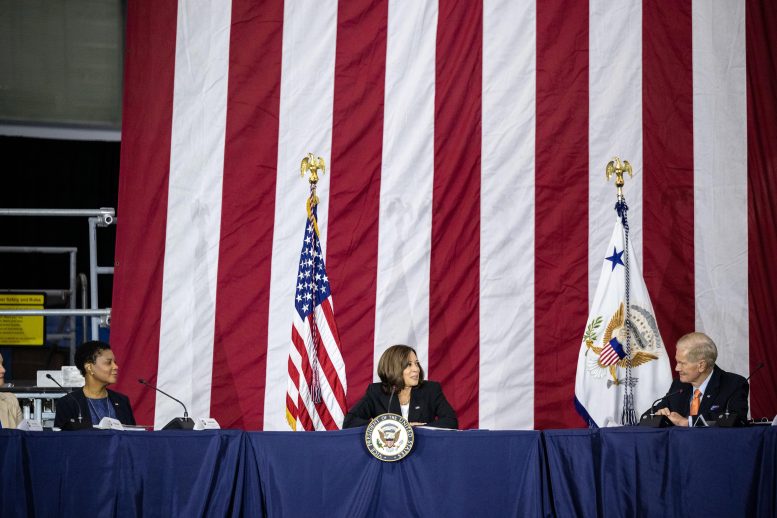
Vice President Kamala Harris highlighted the importance of climate, human spaceflight, and STEM education during the Biden-Harris Administration’s second National Space Council meeting Friday, held at NASA’s Johnson Space Center in Houston. Credit: NASA
National Space Council Meets in Houston
On September 9, Vice President Kamala Harris chaired a National Space Council meeting at NASA’s Johnson Space Center in Houston, and spoke to NASA astronauts Bob Hines, Jessica Watkins, and Kjell Lindgren aboard the International Space Station.
The council discussed a variety of topics including human space exploration, rules for emerging space activities, and STEM education.
NASA also confirmed an extension for the Center for the Advancement of Science in Space, or CASIS, to continue managing the space station, and discussed new space grant awards for STEM students.
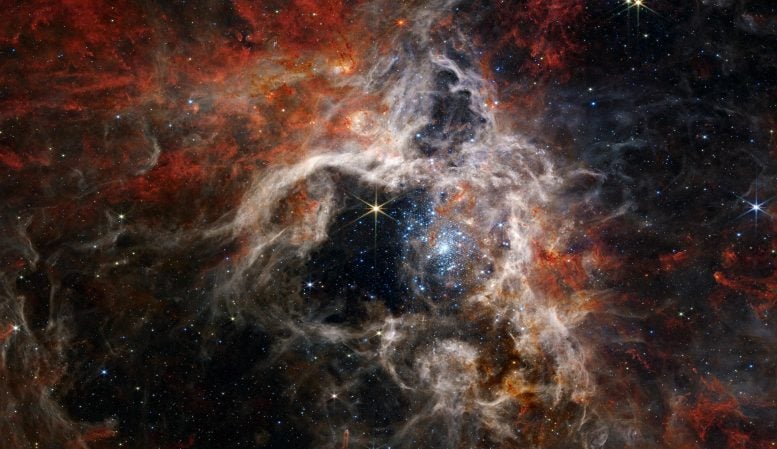
In this mosaic image stretching 340 light-years across, Webb’s Near-Infrared Camera (NIRCam) displays the Tarantula Nebula star-forming region in a new light, including tens of thousands of never-before-seen young stars that were previously shrouded in cosmic dust. The most active region appears to sparkle with massive young stars, appearing pale blue. Scattered among them are still-embedded stars, appearing red, yet to emerge from the dusty cocoon of the nebula. NIRCam is able to detect these dust-enshrouded stars thanks to its unprecedented resolution at near-infrared wavelengths. Credit: NASA, ESA, CSA, STScI, Webb ERO Production Team
Webb Captures New Image of Cosmic Tarantula
NASA’s James Webb Space Telescope captured thousands of never-before-seen young stars in a new image of stellar nursery 30 Doradus, also known as the “Tarantula Nebula.”
Located about 161,000 light-years away from us in the Large Magellanic Cloud, the nebula is the largest and brightest star-forming region near our own galaxy, and is home to the hottest, most massive stars known.
One of the reasons the Tarantula Nebula is interesting to astronomers is the furious rate at which it produces new stars.
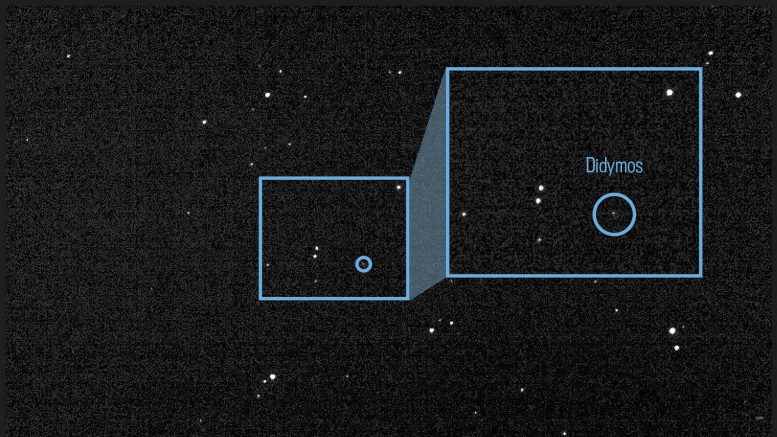
This image of the light from asteroid Didymos and its orbiting moonlet Dimorphos is a composite of 243 images taken by the Didymos Reconnaissance and Asteroid Camera for Optical navigation (DRACO) on July 27, 2022. Credit: NASA JPL DART Navigation Team
DART Sets Sights on Asteroid Target
NASA’s Double Asteroid Redirection Test, or DART, spacecraft recently got its first look at Didymos, the double-asteroid system that includes its target, Dimorphos.
The first look is a composite of 243 images taken by a camera onboard the spacecraft.
On September 26, DART will intentionally crash into Dimorphos, the asteroid moonlet of Didymos.
While the asteroid poses no threat to Earth, this will be the world’s first test of the kinetic impact technique, using a spacecraft to deflect an asteroid for planetary defense.
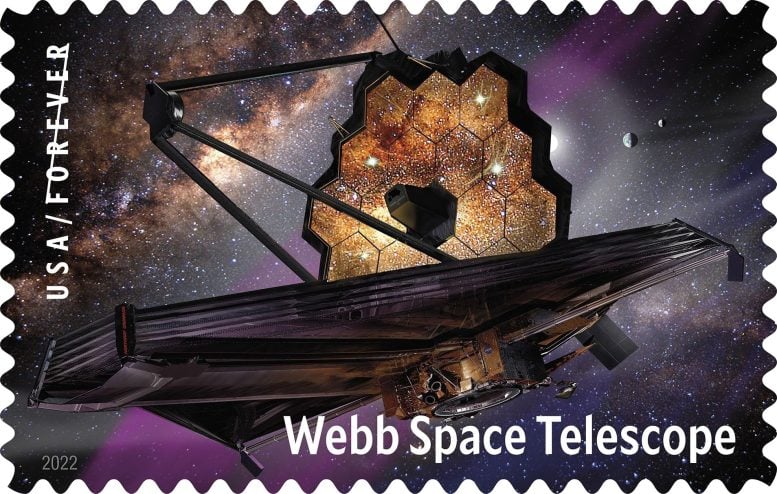
The U.S. Postal Service will issue a stamp highlighting NASA’s James Webb Space Telescope on Sept. 8, 2022. U.S. Postal Service Art Director Derry Noyes designed the stamp using existing art by James Vaughan and an image provided by NASA and the Space Telescope Science Institute. Credit: U.S. Postal Service
U.S. Postal Service Celebrates Webb With New Stamp
The U.S. Postal Service has a new star – the James Webb Space Telescope.
On September 8, the stamp featuring an artist’s digital illustration of Webb against a background of stars was dedicated in a ceremony at the Smithsonian’s National Postal Museum in Washington.
The selvage, or the paper around the stamps, showcases an image of a star that Webb captured during the alignment process earlier this year.
That’s what’s up this week @ NASA …


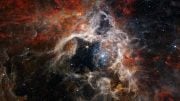
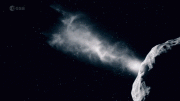
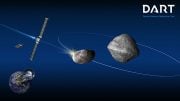
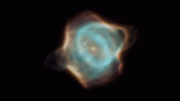
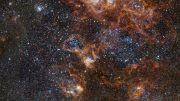
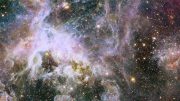
Be the first to comment on "This Week @NASA: Next Artemis I Launch Attempt, Webb Captures Cosmic Tarantula"